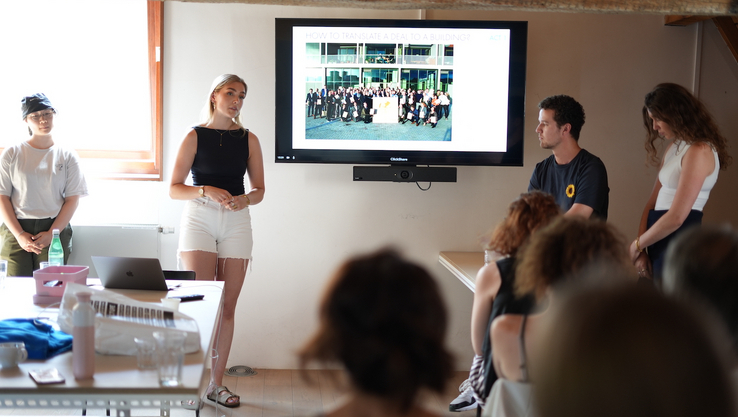Summerschool CIRCU / ABILITY
Rethinking networks of architectural production.
The circular economy - if we are to believe all the media - is rapidly replacing the linear economy. Architecture- and construction newsfeeds are also buzzing with circular and biobased innovations, but are they put into practice?
In this Summer School students investigated who and which parties practice what they preach. What is needed for this, what is that you encounter in that transformation, and what does this mean for the position of an architect? How do they relate to the changing processes of material, -design and -responsibilities within the construction team?
Four architectural schools participated in this Blended Intensive Programme Erasmus+ Summer School: The University of Antwerpen in Belgium, the University of Vaduz in Liechtenstein, the University of Volos in Greece and the Amsterdam Academy of Architecture.
For two weeks, these four schools conducted research in three phases:
- Desktop research in each cultural context, gathering local findings in diagrams and statements.
- Excursions in NL and BE to designers, demolishers, producers and builders that give new insights into achieving low-impact building by intelligent use of space, processes and materials.
- Developing process diagrams that could represent the future of architectural design, material production and building processes, including new roles of all parties involved.
Much more than anticipated, these phases all revealed so much new information. Research within each (cultural) context revealed how ‘circularity’ currently has very different realities in the countries of the participating students. During the excursions, we encountered and learned in depth from the parties who, for a very long or a very short time, are walking the walk within the idea of reuse and clean (bio-based) materials. And finally, the students imagined how this rethinking of the traditional relationships would affect the positions of the existing stakeholders.
This last phase of ‘rethinking the networks’ offered many exciting and promising new insights about how the architect’s role can and should adapt in this ‘new-circular-construction-process-environment’. Circularity invites designers to new forms of creativity during more phases of the design process, offering many opportunities for the architect to have an even more central and guiding role. A great conclusion of this summer school and a promising perspective voor the ‘circular architect’!
